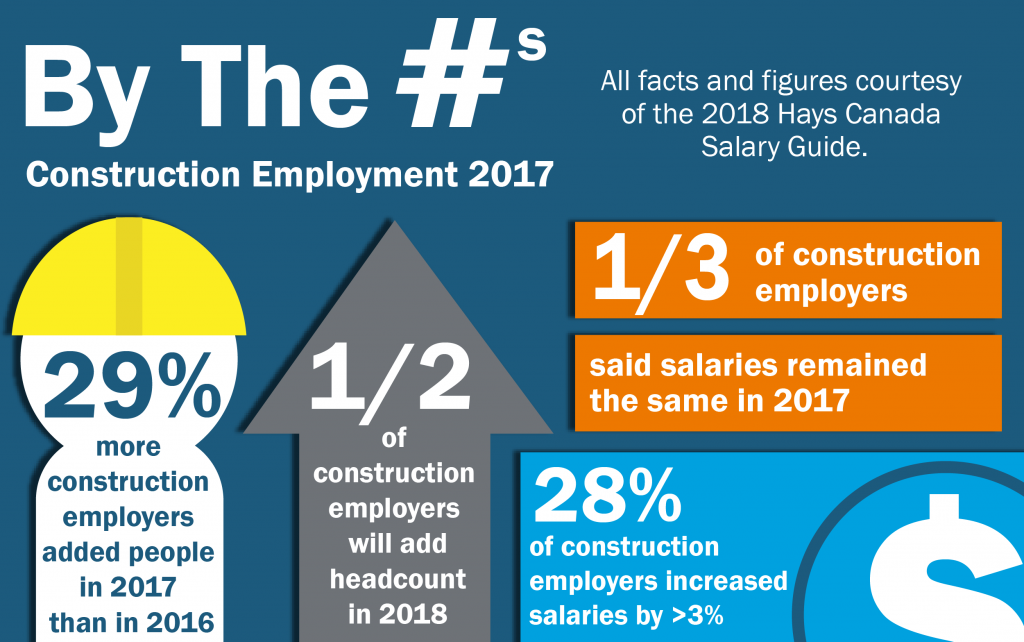Employers are facing a potential perfect storm scenario when it comes to staffing in 2018 says Hays Canada vice-president Jim Fearon.
The eighth annual Hays Canada Salary Guide released recently shows while Canadian employers had a successful year, nominal raises, soft hiring plans and growing discontent among employees could mean a potential workforce crisis in 2018.
“Hiring is getting harder because more companies are hiring, business activity is increasing, 75 per cent of employers are reporting that they are operating in a skills shortage…and on top of that they are offering new staff more than they are paying their existing staff,” explained Fearon. “That has the potential to generate a lot of churn in organizations.”
Despite the strength of the job market and the economy this past year, the report shows employers are being more conservative with their approach to wage increases. The survey results also showed employers appear to instead have an increasing appetite for hiring temporary and contract help while offering employees salary increases of less than three per cent.
Eighty-five per cent of employers say they’ve got skills shortage
— Jim Fearon
Hays Canada
“We’re seeing in 2018 more than 50 per cent of companies are saying they are going to increase wages but they’re actually going to do it less than three per cent,” said Fearon.
There are more companies going to be hiring in the construction industry next year and more of them also are going to be offering lower pay rises, Fearon noted. Forty-nine per cent of construction professionals say their salary is competitive with market rate.
“Eighty-five per cent of employers say they’ve got skills shortage, 69 per cent of employers say that skills shortage is affecting productivity and 75 per cent of them say it is having an affect on their level of stress, of work pressure that their employees are experiencing,” said Fearon, adding the main recruitment challenges are local competition and salary. “Business activity is going to increase, permanent head count is going to increase but we’re not really increasing wages beyond anything above three per cent.”
The poll shows while there may be employment challenges, there is a positive economic outlook for the construction industry.
“Across all industries, about 46 per cent of companies are reporting that the economic outlook ahead looks good, that number is higher in construction, its 49 per cent,” said Fearon. “Seventy-one per cent of construction employers are expecting business activity to increase in 2018.”
Hays’ labour market experts found that 90 per cent of employees would consider leaving their current role for one that met their expectations – a sentiment Hays believes may trigger considerable business-threatening employee departures in 2018.
“Only 10 per cent of employees are actively looking for work but 90 per cent of them – and this is a significant increase from last year – say that if they are offered the right job with the right conditions they would seriously consider moving or they would move,” said Fearon. “On top of that, 40 per cent of existing employers say that they have increased salary offers beyond what their current staff get paid to secure a specific individual with a necessary skill set.”
According to the report, 56 per cent of construction managers have increased a salary offer to secure a specific candidate.
There also seems to be an imbalance between what employers think employees want and what they actually want, added Fearon.
“We know for a fact that the most important thing to employees is that they are getting the right level of training and development. That’s the number one thing that people look for when they’re weighing up an offer or when they’re weighing up do they stay with an organization,” Fearon said. “We asked employers what they thought the top five things that employees were after and only one of those top fives was related to training and development. Whereas when we asked employees the top five things they were after, three out of the top five were all related to training and development.”












Recent Comments
comments for this post are closed